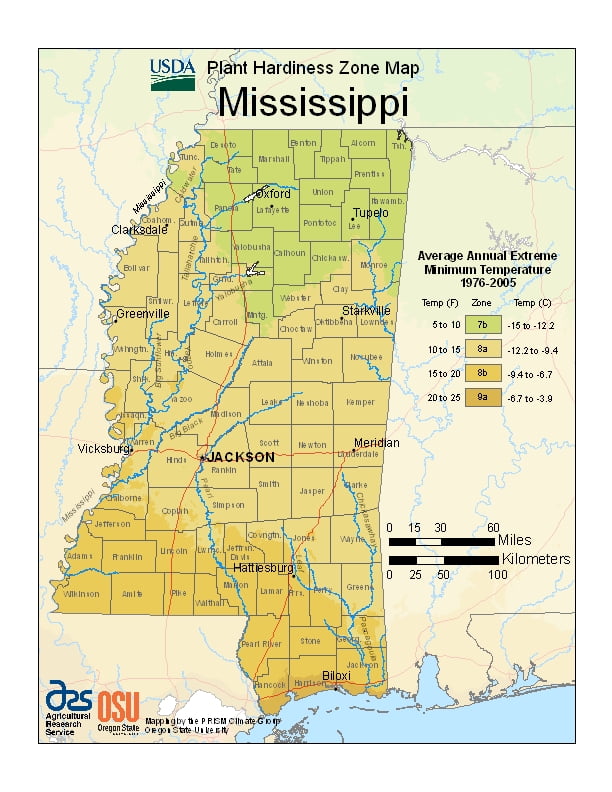
Mississippi has a humid subtropical climate with long, hot and humid summers, and short, mild winters, ranging from USDA Plant Hardiness Zones 7b through 9a.The state has variable weather per different areas so get to know which zone your city is located in so that you can address and avoid potential issues before they become problematic.
The USDA zones map is a useful system for determining what plants will survive and grow in certain areas ofMississippi.
Understanding how these hardiness zones work means you can choose the right planting time, and optimize growing for your climate.
The temperature varies little statewide in the summer; however, in winter, the region near Mississippi Sound is significantly warmer than the inland portion of the state.
Yearly precipitation generally increases from north to south, with the regions closer to the Gulf being the most humid. Thus, Clarksdale, in the northwest, gets about 50 in (1,300 mm) of precipitation annually and Biloxi, in the south, about 61 in (1,500 mm).
Small amounts of snow fall in northern and central Mississippi; snow is occasional in the southern part of the state.